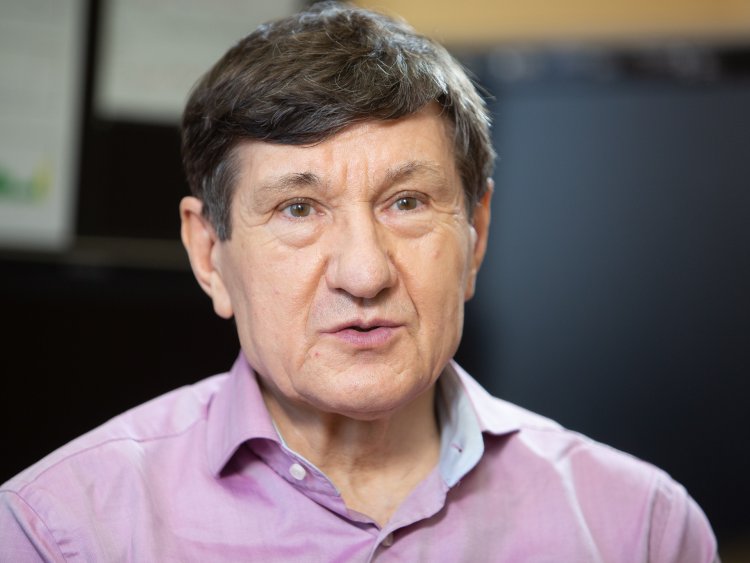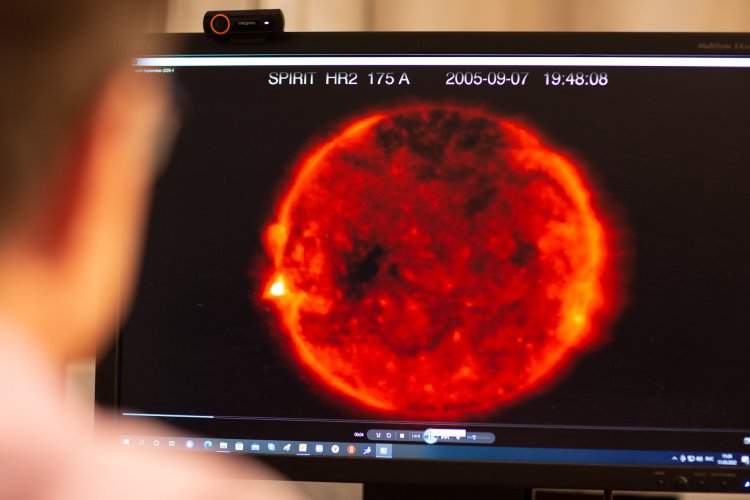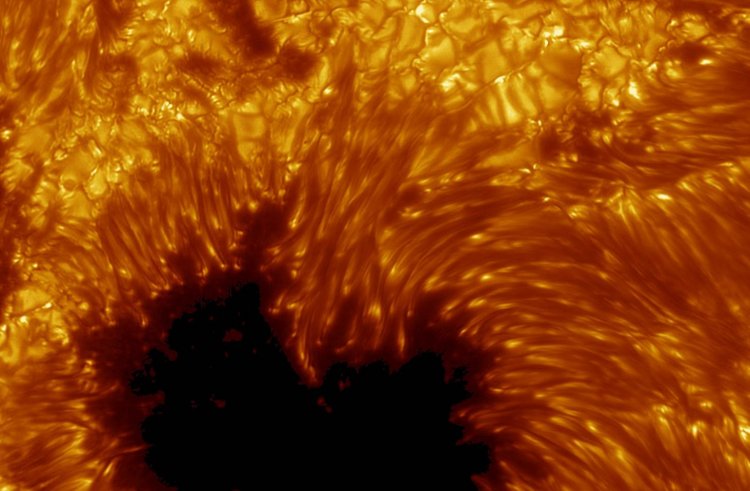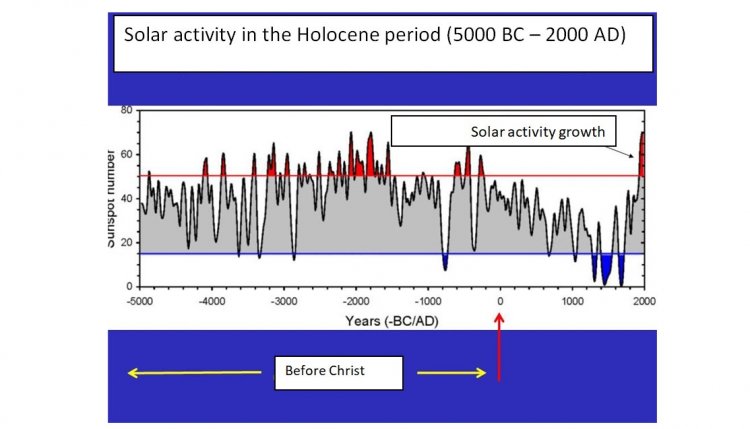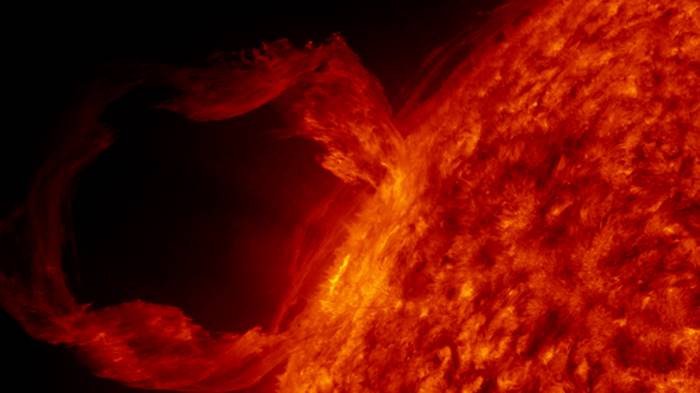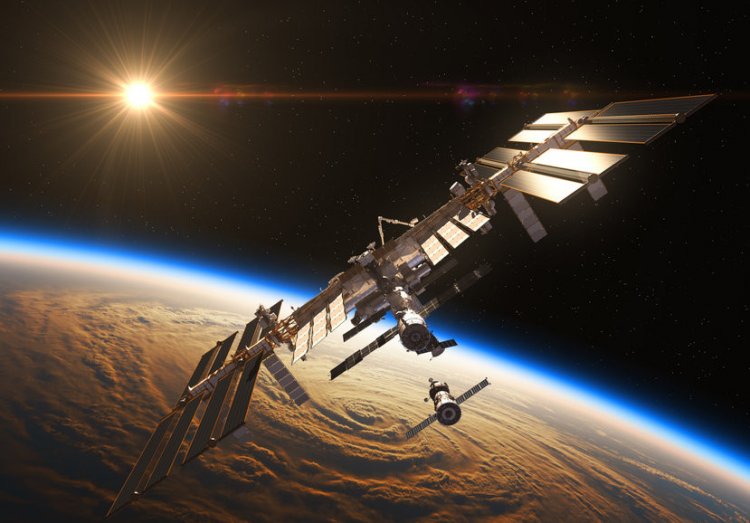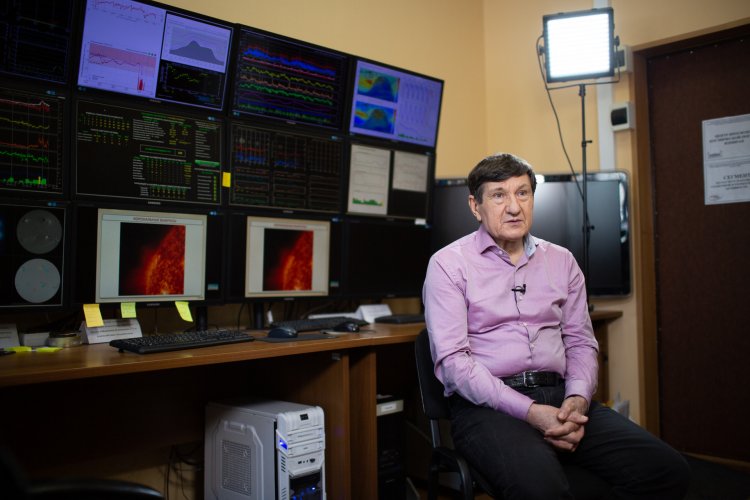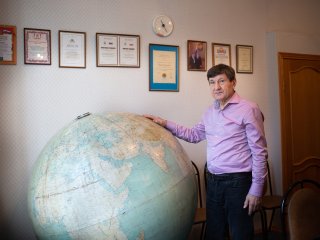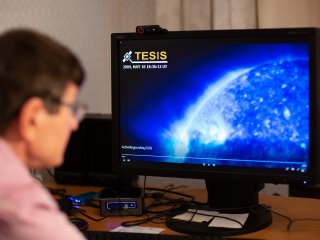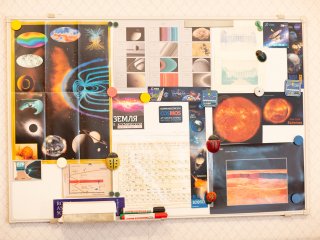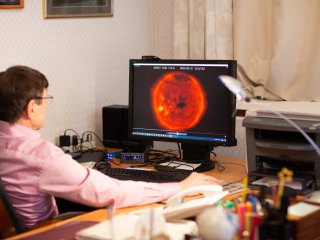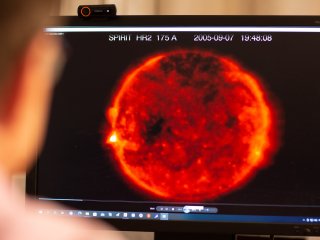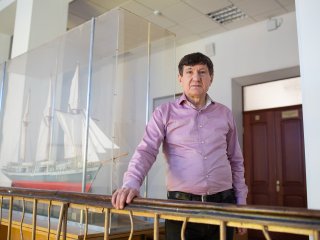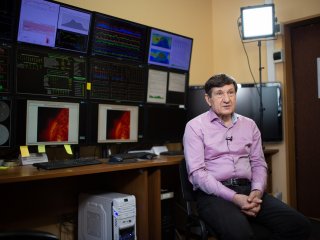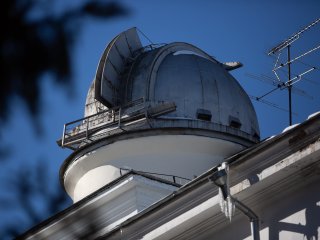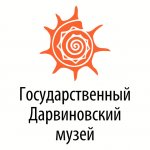The science town of Troitsk is home to one of the world's few scientific centers that accumulate vital information about space weather around the clock. Vladimir Dmitrievich Kuznetsov, Doctor of Physical and Mathematical Sciences, Director of the N. V. Pushkov Institute of Terrestrial Magnetism, Ionosphere and Radio Wave Propagation of the Russian Academy of Sciences (IZMIRAN) told us about the influence of the Sun on the Earth and about the work of the center.
– The Sun is a very massive gravitating object. What happens next to our star as time goes by?
– Indeed, the Sun is a gravitating body, but the force of its gravity is minuscule compared to forces acting in the vicinity of black holes or near other extremely massive space objects.
Compared to the gravitational field of a black hole, the effects of general relativity, such as time dilation, are negligible around our star. Nevertheless, scientists have conducted experiments involving deflection of the beam in the Sun field, which are recognized as indirect experimental confirmation of the general theory of relativity. I’m talking about the experiments with deflection of a star light beam as it passed near a massive gravitating object like our Sun. Such experiments were successfully carried out at the beginning of the 20th century and allowed the scientists to test and confirm Einstein's theory.
As you know, we observe the Sun with a delay of about 7 minutes: this is how long it takes for its light to reach the Earth. However, when we look at distant astrophysical objects millions of lightyears away, the distances are so great that these objects may no longer actually exist, and all we see is remote and irrevocably gone past.
– Let's talk about the influence of the Sun on our lives. Can solar activity cause a headache?
– This is more of a medical issue, which is why we study it together with doctors: we provide colleagues with geophysical data, including those related to solar activity. Generally speaking, healthy people are adapted to all environmental changes, while people with health issues are more sensitive to such factors as weather conditions – for instance, to atmospheric pressure changes. It is known that when magnetic storms occur on Earth due to solar activity, processes leading to pressure changes occur in its atmosphere.
When flares and emissions of matter occur on the Sun, these phenomena generate magnetic plasma clouds that spread across the heliosphere, including toward the Earth. When these clouds collide with the Earth's magnetic field, magnetic storms arise. They can also occur if the solar wind changes its pressure. For instance, so-called coronal holes can emerge from the Sun. These are magnetic tubes, in which the speed of the solar wind can be twice greater than the speed of the ordinary solar wind. When during its rotation around the Sun the Earth passes within the sector of such a coronal hole, geomagnetic activity increases and magnetic storms – the strongest manifestations of geomagnetic disturbance – may happen. At the same time, a wide range of physical phenomena occurs in the Earth's magnetosphere and atmosphere: precipitation of particles from the magnetosphere into the atmosphere, auroras, generation of electric currents, etc. As a result, the atmospheric pressure can change, which, as we known, is among the weather conditions that people can feel, especially if their adaptation is weakened. Doctors do record an increase in the number of ambulance calls and visits to polyclinics correlating with increased geomagnetic activity.
– In other words, there is solid statistical evidence, right?
– Yes, the statistical data exist, but this is a matter of medicine. We cannot eliminate such natural phenomena as magnetic storms and solar activity – just like the weather. Our task is to make weather-sensitive people, especially those with chronic diseases, follow the doctors' recommendations on how to behave on such days, what medications to take, etc.
– We are now at the beginning of another 11-year solar cycle. In the coming years, an increase in the number of sunspots is expected, and, therefore, more flashes in the Sun. Is it true?
– Yes, we are indeed in the initial phase of the next 11-year cycle. These cycles have been counted since Galileo's times, and today scientists distinguish cycles of medium, strong, and weak power. We are in the growth phase and in about 4-5 years we will reach the maximum in terms of the number of sunspots. Then the process will decline again.
Each solar cycle determines perturbations in the near-Earth space, so it is important to know what the cycle will be, how many solar flares are expected, etc. During the 11-year solar cycle, the Earth experiences about 600 magnetic storms on average. Of these, there are several strong or even extremely strong ones. During every 11-year cycle, approximately 37 thousand flares occur on the Sun.
Solar flares are powerful and rapidly developing local processes on the Sun, which lead to a significant energy release. They develop within several minutes and fade in several hours. The flares occur in active zones surrounding sunspots, mostly between spots with opposite magnetic polarities.
Reference source: IKI of the RAS. Photo source: Andrey Luft / Scientific Russia
One of the best sunspot images, obtained by the Swedish solar telescope on Tenerife in the Canary Islands.
Image source: European Southern Observatory
– How stable is our Sun? For instance, can its activity suddenly decrease, leading to catastrophic consequences?
– Studying the solar cycle has been one of the scientists' key tasks for centuries, because one very interesting phenomenon occurred a few years after Galileo's death, in 1645, – there were no visible spots on the Sun. This period is called the Maunder Minimum. Absence of visible spots on the Sun lasted for 70 years, until 1715. During these years, the Little Ice Age began on Earth, namely in Europe.
I will try to explain what it could be related to. Today we know that the magnetic field in a sunspot usually measures 3–4 thousand gauss and suppresses convection coming from below, which carries heat from the depths of the Sun along with hot plasma. When this plasma emerges on the Sun surface, it contributes to its radiation. Thus, the sunspot is dark due to suppressed convection, and we can see it. But if the magnetic field in the spot drops below 1.5 thousand gauss, the convection is suppressed poorly, and the spot remains hot, being invisible on the Sun's disk.
– In other words, the spot is there, but it's invisible.
– Yes, there are no spots in this case, but the magnetic fields are still there. Possibly, the Maunder Minimum happened because the field weakened, but the cycle continued. Then, after 70 years, the field intensified again, and the sunspots, dark tracers of the magnetic field, reappeared. This global minimum of solar activity coincided with a noticeable cooling on Earth, which was observed in Europe.
Abraham Hondius. The Frozen Thames, Looking Eastwards towards Old London Bridge, London(1677)
In addition to the 11-year solar cycle, there are others, such as 22-year, 100-year, and even 200-year cycles. In many cases, it was noted that the decrease in temperature on Earth during the ice ages coincided with periods of global decrease in solar activity. It is amazing. As they say, believe it or not. And the question naturally arises about the connection of solar activity with the climate and ice ages of the past.
There are also periods of increased solar activity. We actually live in such an era now – and we observe no ice ages.
– How long will it last?
– It is hard to make predictions about how long it will last yet. Besides, the Earth's magnetic field can influence the situation. To date, we don’t have an exact answer.
We need to collect as much data as possible about solar activity and about changes in the Earth's magnetic field. The more such information we have, the more accurately we will be able to predict future scenarios and analyze scenarios of the past.
Solar activity in the Holocene.
Image source: from the works of Solanki et al. 2004; Usoskin et al. 2006, 2007.
– We are now in IZMIRAN, at the Space Weather Forecasting Center – one of the largest such centers in the world. Could you tell us more about your research?
– Solar activity has a magnetic nature and generates dangerous phenomena: radiation emitted as streams of energy particles and hard radiation, magnetic storms, geomagnetically induced currents, swelling of the atmosphere, etc. All this has a direct impact on space satellites and operation of electronic components installed there. Energetic charged particles released by the Sun damage electronics inside satellites and create a danger for astronauts.
When geomagnetic storms occur, so-called geomagnetically induced currents are generated on Earth in all electrically conductive systems. For instance, the notorious Quebec event of 1989, when a massive almost day-long blackout occurred in the Canadian province of Quebec due to a magnetic storm attack, and the country's capital, Ottawa, was left without electricity for 9 hours.
Mass emissions from the Sun.
Image source: according to the SDO (Solar Dynamic Observatory, NASA) satellite
We must not forget about the dangerous solar wind as well. All these space weather factors have a direct impact on human activity both on Earth and in space. Yes, we cannot eliminate space weather phenomena, but we can minimize losses and risks associated with them. This (and not only) is what we do here.
Our star is the source of space weather, and we must constantly study active areas of the Sun, flares that occur there, etc., and supply this information to agencies operating the infrastructure that can be affected by these phenomena. Continuous observation of the Sun is necessary. And in order to do it, it is required to mobilize all resources, both in space and on the ground. All observatories existing on Earth must monitor the Sun and constantly exchange information to minimize losses in space – and not only there.
– And how exactly can they be minimized?
– As for space, the most primitive proactive measure is to deactivate the satellite: if you turn it off, there will be no current or electric fields, and this can help the device survive all space weather manifestations more easily. However, the satellite is unable to perform its tasks during this time.
– Let's go back to your center's work.
– There are only a few centers like this in the world – centers, where all crucial information about space weather is accumulated. IZMIRAN specialists monitor solar activity around the clock, receive data from spacecraft flying in the interplanetary space, continuously observe the Sun, measure solar wind and energy particle flows, magnetic clouds, and shock waves. All these data are subjected to detailed analysis, based on which forecasts regarding the state of the near-Earth space are made. Such space weather forecasts are provided for a period of several days (sometimes more) and up to several hours in an urgent mode.
We submit all the obtained information to the Space Flight Control Center, to Roscosmos Group, and other institutions.
In November 2003, due to a strong magnetic storm, the International Space Station “dropped” by 7 km at once. Due to the strong magnetic storm raging for a week, the ISS began to lose altitude faster than usual.
Photo source: 3dsculptor / 123RF
Information about magnetic storms is especially valuable. Let me give one example. There is such an effect as atmosphere swelling: during a magnetic storm, the Earth's atmosphere swells, heats up, its dense layers rise up, and low-flying satellites, including the ISS, begin to slow down abnormally. In 1989, when the aforementioned Quebec event occurred, many satellites were lost altogether or changed orbits. They had to be restored.
Of course, our goal is not just to observe and monitor such events, but also to predict them. It is important to inform about an expected solar flare in advance and to warn of the possible consequences associated with it. If there has been a mass ejection on the Sun, we have to inform what speed it has, when it reaches us, and when to expect a magnetic storm.
– Such information is useful not only for departments, but also for weather–sensitive people.
– Yes. Information about the current geomagnetic situation is available on our website. It is also possible to get it via the hotline with an answering machine. Once our website crashed and the hotline stopped working; then elderly people started reaching us via other phone numbers to ask when the hotline would be restored. This information is very important to them, because they take medicines based on our forecasts.
V. D. Kuznetsov at the IZMIRAN Space Weather Research Center.
Photo source: Andrey Luft / Scientific Russia
– Vladimir Dmitrievich, could you tell us about the fundamental and applied aspects of studying the Sun?
– Studying the Sun is obviously important from the view point of fundamental science, since the processes we observe on the Sun also occur on distant stars. But these remote stars are not yet available to us for detailed research. We can only observe our Sun thoroughly and use this knowledge to study more distant objects.
As for the applied aspect, I think the impact of space weather effects on the Earth will only increase over time. This is due to the fact that our civilization is developing, very extensive power systems are being created: power lines, pipelines, and other facilities. Space activity is also expanding, which means that the number of satellites affected by space weather is also increasing. Hence the growing need for an even deeper study of the processes taking place on the Sun in order to ensure the sustainable development of our society and technologies regardless of space weather follies.
The interview was taken with the support of the Ministry of Science and Higher Education of the Russian Federation and the Russian Academy of Sciences.
